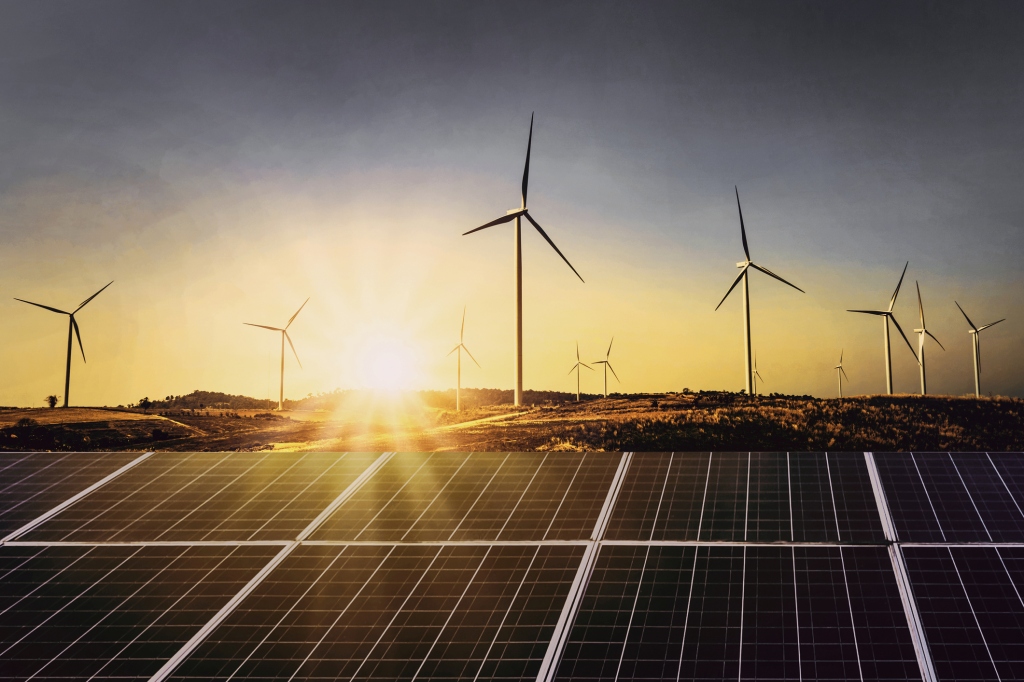Renewable energy sources have become increasingly popular in recent years as people strive to reduce their carbon footprint and transition towards a more sustainable future. These energy sources utilize natural resources that are constantly replenished, making them an excellent alternative to fossil fuels. In this article, we will explore the top 10 renewable energy sources that are leading the way towards a greener planet.
1. Solar Energy: Solar power is undoubtedly one of the most widely recognized forms of renewable energy. It harnesses sunlight and converts it into electricity through photovoltaic panels or concentrated solar power systems. Solar energy can be utilized on both small and large scales, from rooftop installations on homes to massive solar farms.
2. Wind Energy: Wind turbines capture kinetic energy from the wind and convert it into electrical power. They are commonly found in wind farms located in areas with consistent strong winds such as coastal regions or open plains. The flexibility of wind turbines allows for installations ranging from single turbines for residential use to vast arrays capable of powering entire cities.
3. Hydropower: Hydropower relies on flowing water – usually rivers or streams – to generate electricity via turbines connected to generators. It is a highly efficient form of renewable energy and has been used for centuries by utilizing dams or run-of-river systems. Large-scale hydroelectric dams can provide substantial amounts of clean electricity while smaller micro-hydropower systems are suitable for rural areas.
4. Geothermal Energy: Geothermal power utilizes heat generated within the Earth’s core, which is accessed by drilling deep wells into hot underground reservoirs called geothermal fields or hydrothermal sites. This heat is then converted into electricity using steam turbines or direct heating applications such as district heating systems.
5. Biomass Energy: Biomass refers to organic matter derived from plants and animals that can be used as fuel for generating heat or producing electricity through combustion processes like co-firing with coal in power plants or conversion via anaerobic digestion. Biomass energy is a renewable alternative to fossil fuels and can be sourced from agricultural waste, forestry residues, or dedicated energy crops.
6. Tidal Energy: Tidal power harnesses the gravitational pull of the moon and sun on Earth’s oceans to generate electricity. This form of renewable energy utilizes underwater turbines that spin as tides rise and fall, converting the kinetic energy into electrical power. Tidal energy has enormous potential but requires specific locations with significant tidal ranges for optimal efficiency.
7. Wave Energy: Similar to tidal power, wave energy converts the motion of ocean waves into usable electricity using devices like oscillating water columns or submerged buoys. Wave farms are typically placed offshore in areas with strong wave activity to maximize their potential.
8. Hydrogen Fuel Cells: Unlike other forms of renewable energy mentioned above, hydrogen fuel cells do not produce electricity directly from a natural resource but rather use stored hydrogen gas to generate clean power through an electrochemical process. Hydrogen can be produced using various methods, including electrolysis powered by renewable sources like solar or wind energy.
9. Biogas: Biogas is a type of biofuel generated through anaerobic digestion – the decomposition of organic matter in the absence of oxygen – which produces methane-rich gas that can be used for heating, cooking, or generating electricity. Biogas plants collect organic waste materials such as agricultural residue, food scraps, or animal manure and convert them into biogas via controlled fermentation processes.
10. Ocean Thermal Energy Conversion (OTEC): OTEC harnesses temperature differences between warm surface waters and cold deep-sea waters to produce electricity using heat exchangers and turbines driven by vaporized fluids like ammonia or refrigerants. While still in its early stages of development, OTEC shows great promise for providing clean energy in tropical coastal regions.
These top 10 renewable energy sources offer viable alternatives to traditional fossil fuels, reducing greenhouse gas emissions and contributing to a more sustainable future. As technology advances and investment in renewable energy continues to grow, the potential for these sources to revolutionize our energy landscape becomes increasingly evident. By embracing renewable energy, we can pave the way for a cleaner and greener world for generations to come.

Leave a comment